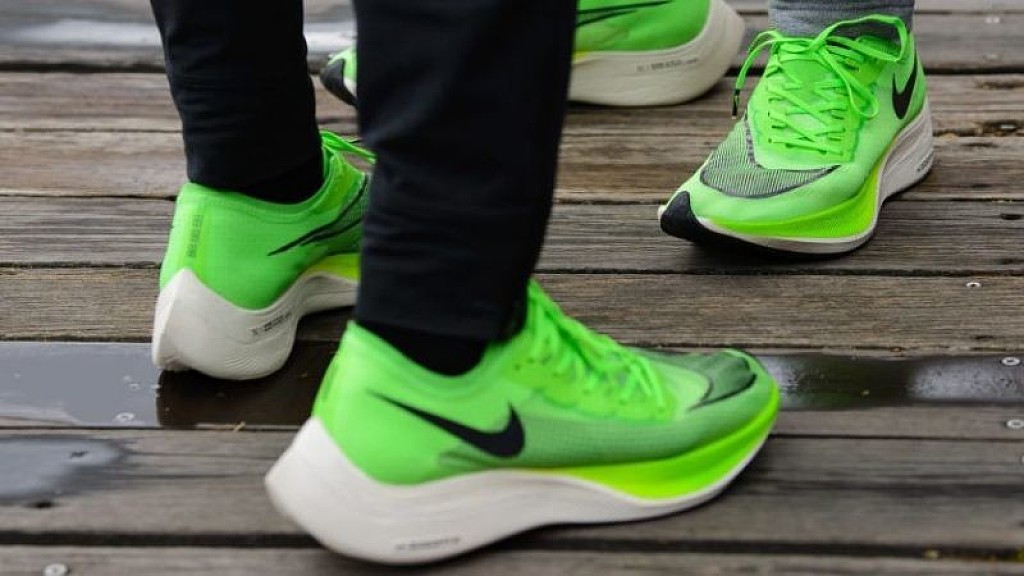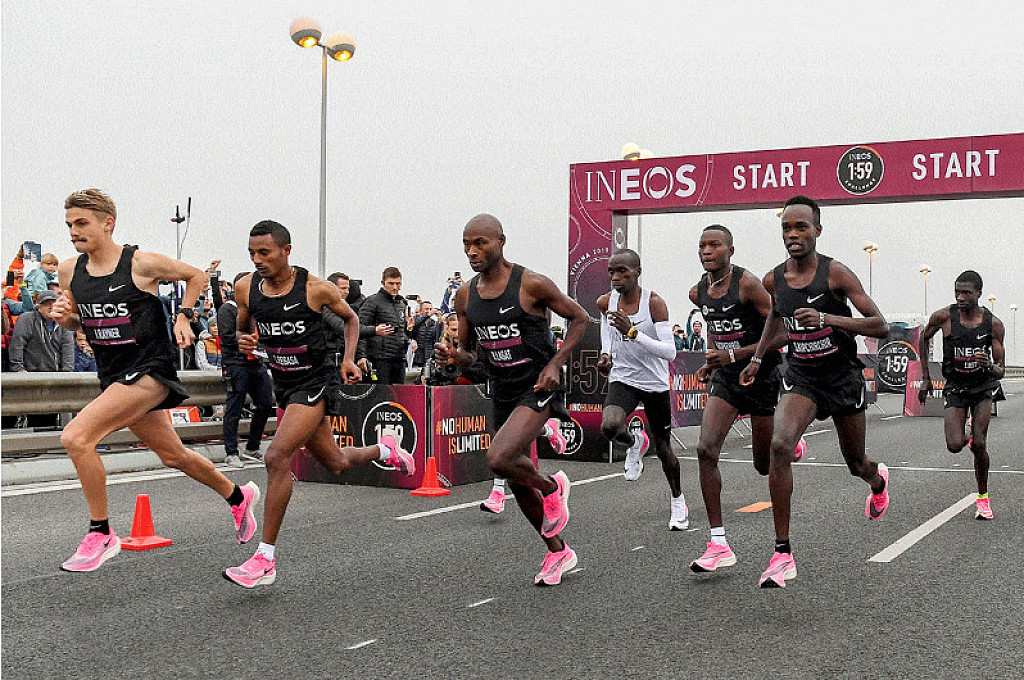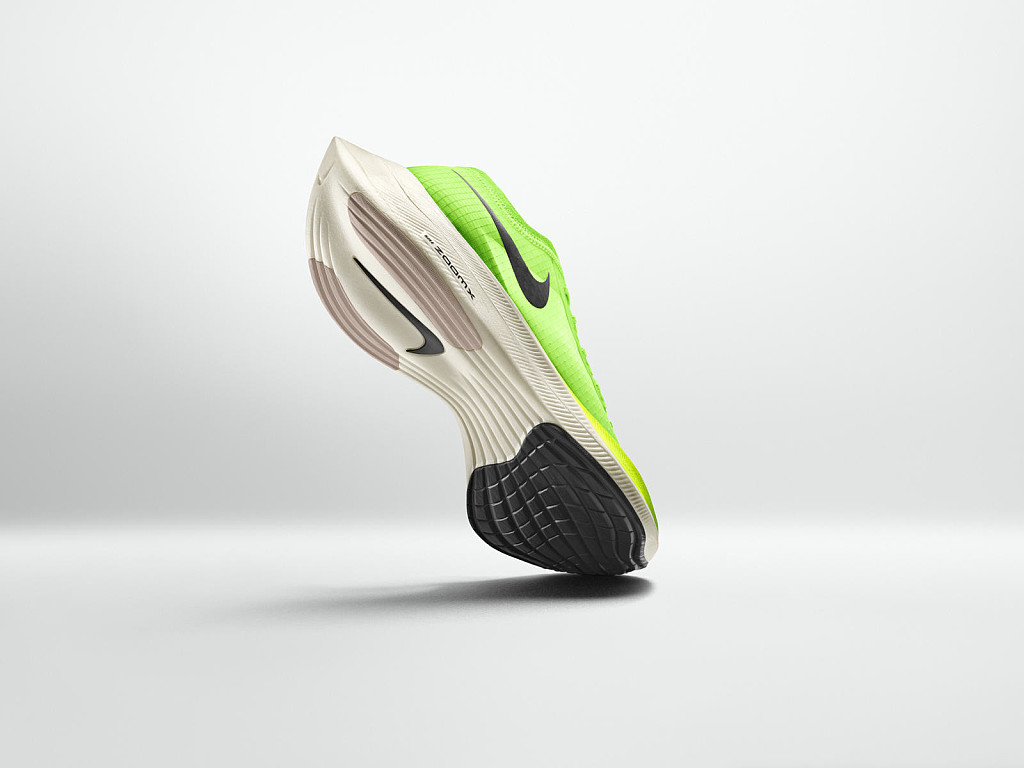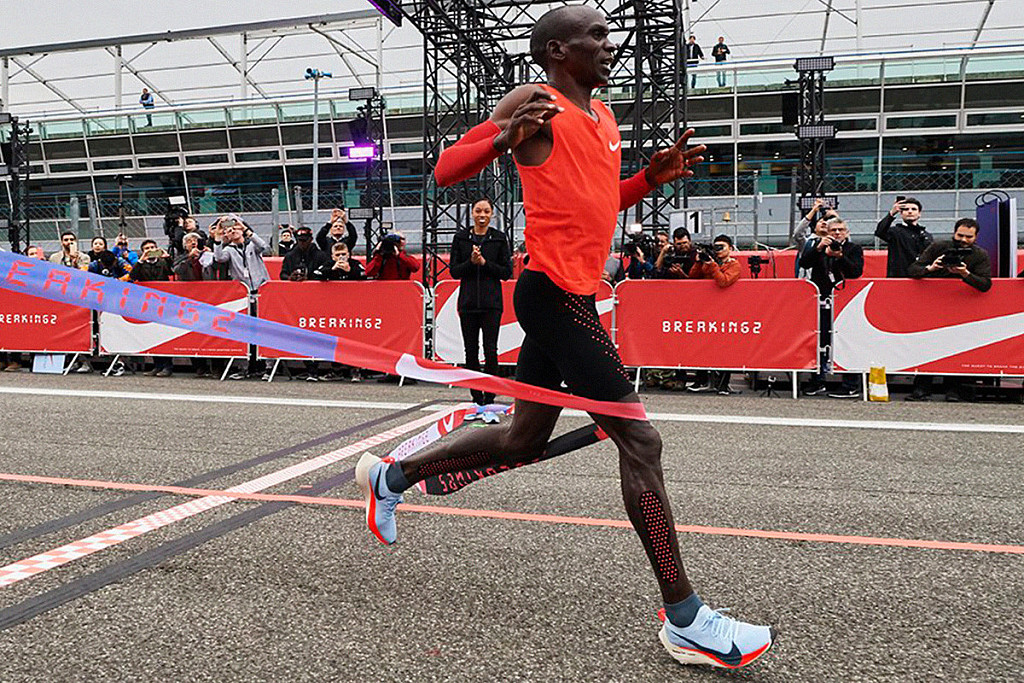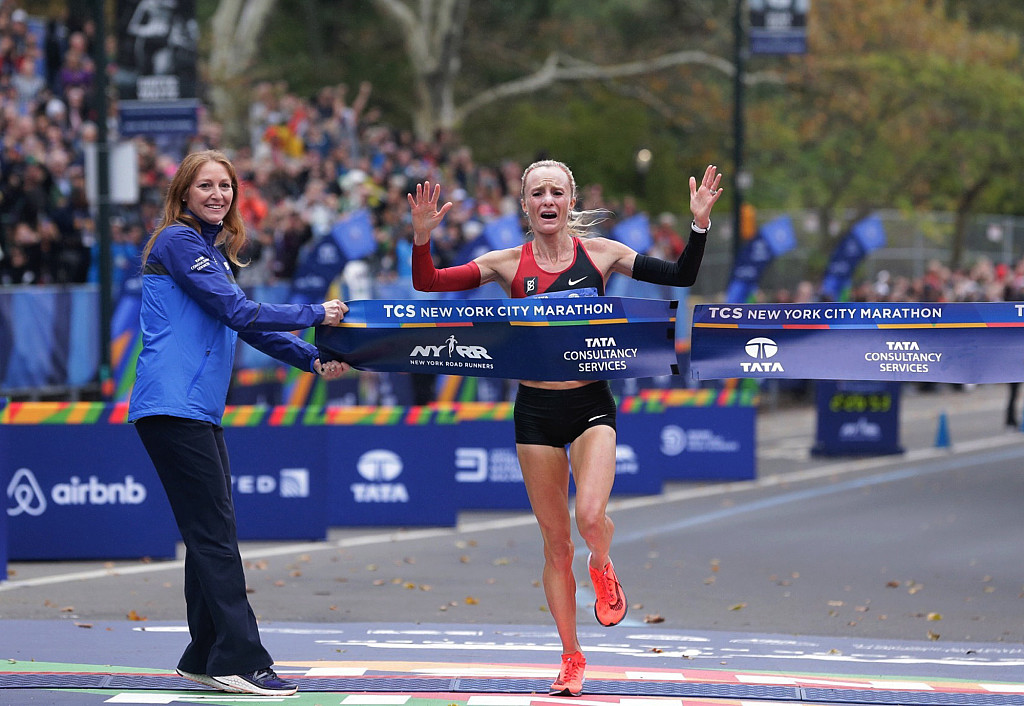Running News Daily
Running News Daily is edited by Bob Anderson. Send your news items to bob@mybestruns.com Advertising opportunities available. Train the Kenyan Way at KATA Kenya and Portugal owned and operated by Bob Anderson. Be sure to catch our movie A Long Run the movie KATA Running Camps and KATA Potato Farms - 31 now open in Kenya! https://kata.ke/
Index to Daily Posts · Sign Up For Updates · Run The World Feed
Articles tagged #Zoom Vaporfly 4%
Today's Running News
Nike's controversial Vaporfly shoe has been permitted for use in the Tokyo 2020 Olympics
World Athletics has temporarily updated its guidelines for sports shoes worn in competitive events ahead of the Tokyo 2020 Olympics in July.
The new guidelines from the international governing body for athletics bans the trainer Eliud Kipchoge wore to break the two-hour marathon record.
Vaporfly meets new stipulations, However, Nike's Vaporfly range – including the Nike ZoomX Vaporfly NEXT% and the Zoom Vaporfly 4% – meets the stipulations of World Athletics' amended Technical Rules.
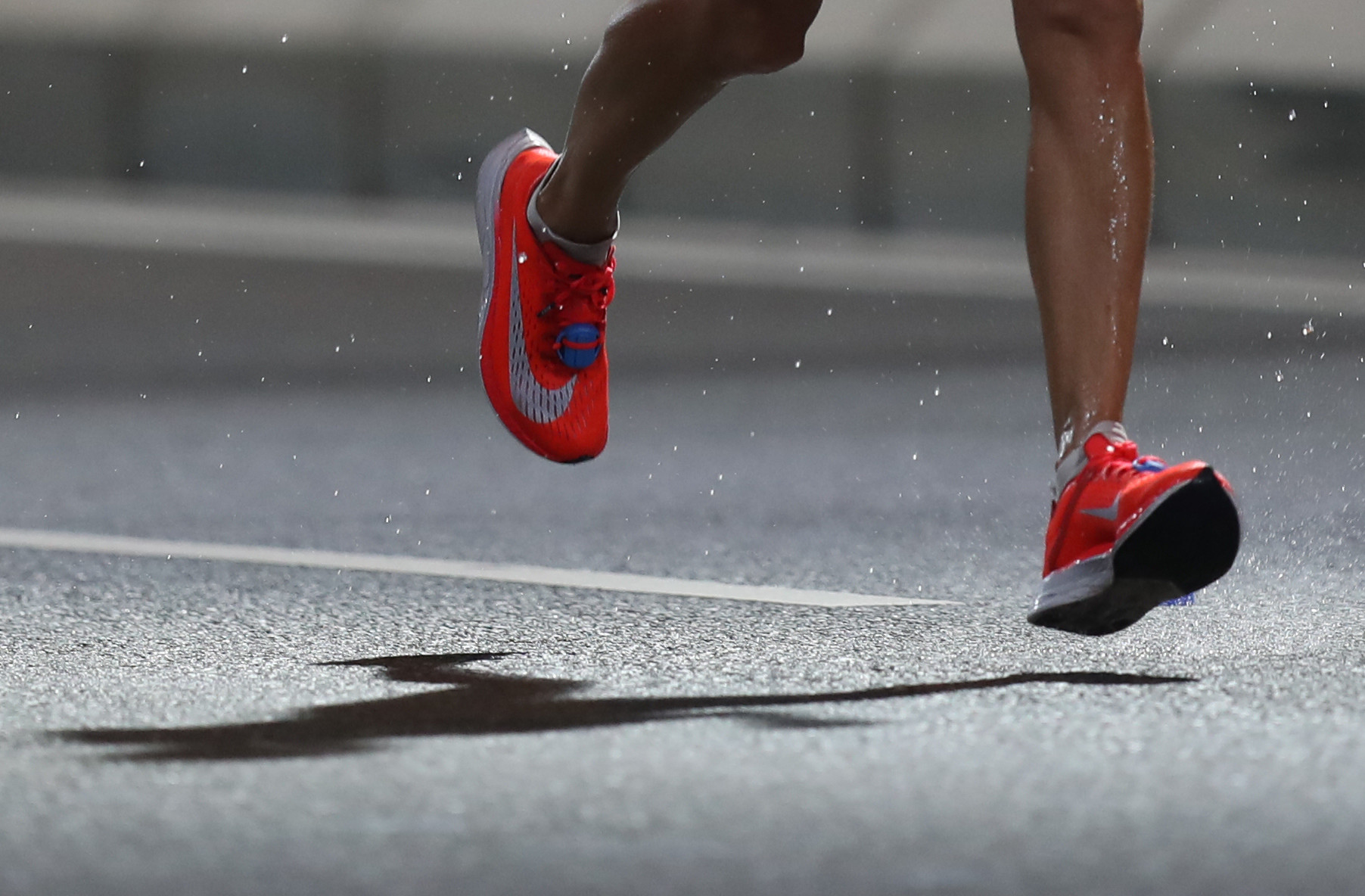
These prohibit shoes with soles that are thicker than 40 millimetres and the inclusion of more than one carbon-fibre plate, or similar item, in the sole.
The news comes amid criticism of the fairness of allowing athletes to compete while wearing the Vaporfly range, which have thick, foam soles and carbon-fibre plates to improve speed.
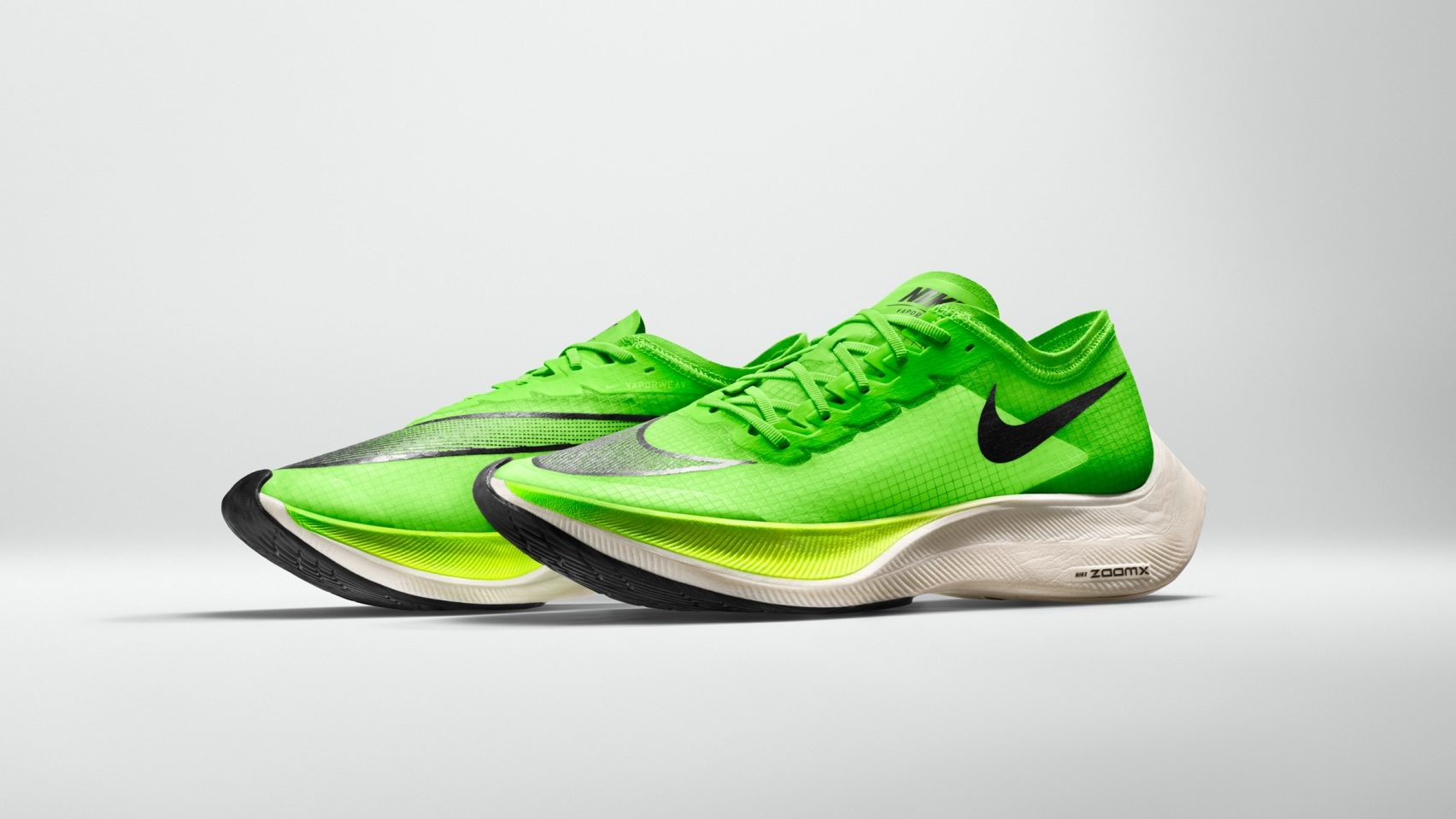
In 2019, 31 of the 36 podium positions in the six world marathon majors were won by elite athletes wearing Vaporfly, as reported by the Guardian.
World Athletics' Moratorium, which forms part of the Clothing section of the guidelines, also states that, from 30 April, shoes have to be on the open market for at least four months before an elite athlete can wear them for a contest.
While Vaporfly remains within the amends, the prototype Air Fly trainer that Nike-sponsored Kenyan runner Eliud Kipchoge wore to run a sub-two-hour marathon in October 2019 will be banned under the regulations.
The sneaker has a much chunkier sole than the Vaporfly and reportedly includes three carbon-fibre plates.
It has been reported, however, that Nike still has time to make amends to the Alpha Fly ahead of a release in March – over four months before the start of the Tokyo 2020 Olympics on 24 July.
This could make it possible for athletes to wear the shoe during the major competition.
by Eleanor Gibson
Login to leave a comment
Tokyo 2020 Olympic Games
Fifty-six years after having organized the Olympic Games, the Japanese capital will be hosting a Summer edition for the second time, originally scheduled from July 24 to August 9, 2020, the games were postponed due to coronavirus outbreak, the postponed Tokyo Olympics will be held from July 23 to August 8 in 2021, according to the International Olympic Committee decision. ...
more...Nike’s Fastest Shoes May Give Runners an Even Bigger Advantage Than First Thought
Anyone who saw Eliud Kipchoge of Kenya break the two-hour marathon barrier in October very likely saw something else, too: the thick-soled Nike running shoes on his feet, and, in a blaze of pink, on the feet of the pacers surrounding him.
These kinds of shoes from Nike — which feature carbon plates and springy midsole foam — have become an explosive issue among runners, as professional and amateur racers alike debate whether the shoes save so much energy that they amount to an unfair advantage.
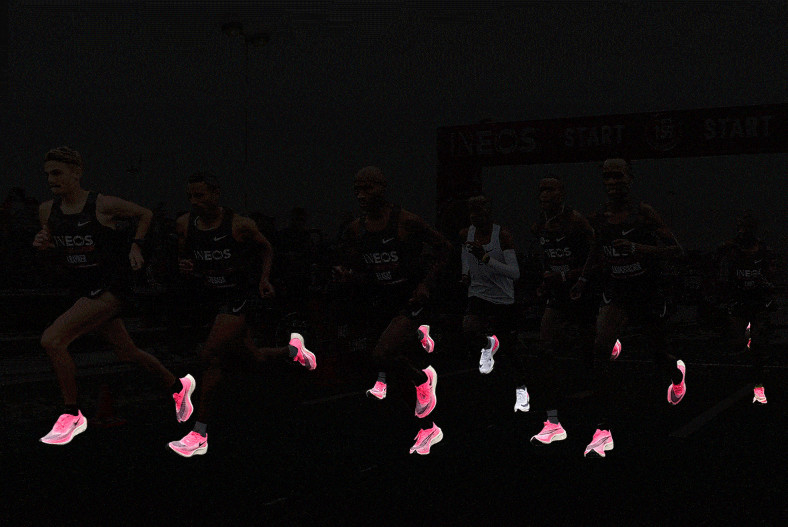
A new analysis by The New York Times, an update of the one conducted last summer, suggests that the advantage these shoes bestow is real — and larger than previously estimated.
At the moment, they appear to be among only a handful of popular shoes that matter at all for race performance, and the gap between them and the next-fastest popular shoe has only widened.
We found that a runner wearing the most popular versions of these shoes available to the public — the Zoom Vaporfly 4% or ZoomX Vaporfly Next% — ran 4 to 5 percent faster than a runner wearing an average shoe, and 2 to 3 percent faster than runners in the next-fastest popular shoe. (There was no meaningful difference between the Vaporfly and Next% shoes when we measured their effects separately. We have combined them in our estimates.)
This difference is not explained by faster runners choosing to wear the shoes, by runners choosing to wear them in easier races or by runners switching to the shoes after running more training miles. In a race between two marathoners of the same ability, a runner wearing these shoes would have a significant advantage over a competitor not wearing them.
The shoes, which retail for $250, confer an advantage on all kinds of runners: men and women, fast runners and slower ones, hobbyists and frequent racers.
Many other brands, including Brooks, Saucony, New Balance, Hoka One One and Asics, have introduced similar shoes to the market or plan to. These shoes may provide the same advantage or an even larger one, but most do not yet appear in sufficient numbers in our data to measure their effectiveness.
What makes these shoes different is, among other things, a carbon-fiber plate in the midsole, which stores and releases energy with each stride and is meant to act as a kind of slingshot, or catapult, to propel runners. The shoes also feature midsole foam that researchers say contributes to increased running economy.
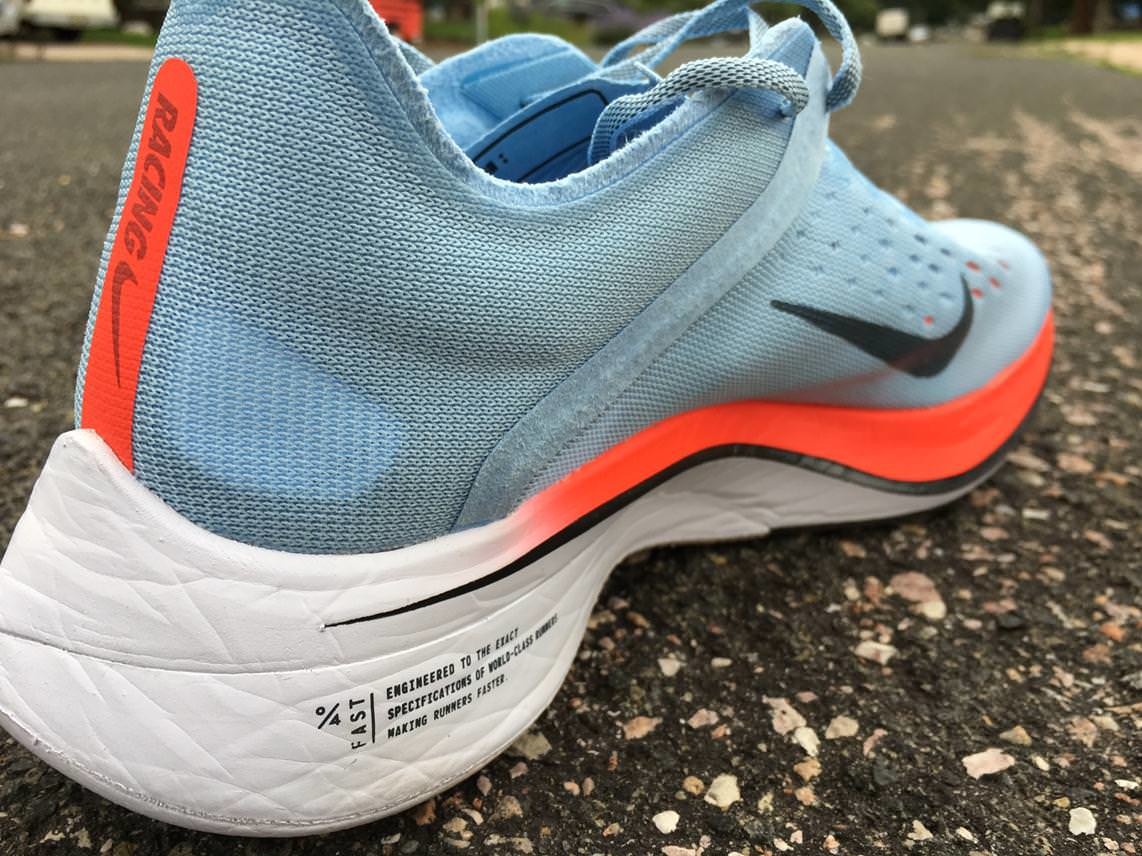
Whether the shoes violate rules from track’s governing body, World Athletics, depends on how one interprets this sentence from its rulebook: “Shoes must not be constructed so as to give athletes any unfair assistance or advantage.” It does not specify what such an advantage might be.
“We need evidence to say that something is wrong with a shoe,” a spokesman for the governing body, then called the I.A.A.F., told The Times last year. “We’ve never had anyone bring some evidence to convince us.”
In an announcement earlier this year, the group said, “It is clear that some forms of technology would provide an athlete with assistance that runs contrary to the values of the sport.” It has since appointed a technical committee to study the shoe question, and to make a report with recommendations. (The report was originally intended to be released to the public by the end of the year; it will now reportedly be released in 2020.)
When we asked Nike last year about whether its shoes might violate I.A.A.F. rules, a spokesman said the shoe “meets all I.A.A.F. product requirements and does not require any special inspection or approval.”
Last Thursday, the company said in a statement, “We respect the I.A.A.F. and the spirit of their rules, and we do not create any running shoes that return more energy than the runner expends.”
There is no such thing as a large-scale randomized control trial for marathons and shoes, but there is Strava, a fitness app that calls itself the social network for athletes. Nearly each weekend, thousands of runners compete in races, record their performance data on satellite watches or smartphones, and upload their race data to the app. This data includes things like a race name, finish time, per-mile splits and overall elevation profile. And about one in four races includes self-reported information about a runner’s shoes.
In all, this data includes race results from about 577,000 marathons and 496,000 half marathons in dozens of countries from April 2014 to December 2019.
How we measured the shoes’ effect
[These approaches are essentially identical to the ones The Times used last summer. See that article for more examples and methodological details.]
We measured the shoes’ performance using four different methods — each with its own strengths and flaws:
1. Using statistical models2. Studying groups of runners who ran the same pair of races3. Following runners as they switch shoes4. Measuring the likelihood of a personal record in a pair of shoes
None of these approaches are perfect, but they all point to the same conclusion: Something is happening in races with the Vaporfly and Nike Next% shoes that is not happening with most any other kind of popular shoe.
Besides race times and the names of shoes, we also have data on runners’ gender and approximate age. For some of the more serious runners, we have detailed information about their training volume in the months leading up to a race. We also know about the weather on race day.
When we put this information into a statistical model, times associated with Vaporfly and Next% shoes are a clear outlier — about 2 percent faster than with the next-fastest shoe. The model estimates the effect of wearing these shoes compared with the effect of wearing other shoes.
No statistical model is perfect, and it’s possible that runners who choose to wear Vaporfly or Next% shoes are somehow different from runners who do not. Regardless of the decisions that went into this model — even when trying to control for runners’ propensity to wear the shoes in the first place — the outputs were similar.
Strava is very popular among runners. At last year’s Berlin Marathon, for example, more than 10,000 runners uploaded race information to Strava, and this year, more than 14,000 did. Crucially for our purposes, about a thousand of those runners ran both races, and a subset of them reported racing in different shoes.
We could then examine the change in performance of two similar runners — people with similar race performances and, ideally, training regimens — and compare the improvement of a runner who switched shoes with a runner who did not. In Berlin, runners who switched to Vaporfly or Next% shoes improved their times more than runners who did not, on average.
For two athletes and a single pair of races, this might not tell us much. But in our data, there are thousands of instances when pairs of runners ran in the same two races.
When we perform this calculation for every pair of races in our data and measure the effect of switching to any kind of popular shoe, we see that runners who switch to these Nike shoes improved significantly more than runners who switched to any other kind of shoe. No other shoe comes close to having the same effect.
More than 110,000 athletes uploaded data for more than one marathon, and about 47,000 uploaded data for three or more marathons. The Strava data allows us to follow these repeat racers over time and as they change shoes.
When we aggregate the change in race times for runners the first time they switch to a new pair of shoes, runners who switched to Vaporflys or Next% shoes improved their times more than runners who switched to any other kind of popular shoe.
Race times are, in many ways, a crude way to measure performance. One marathon may be hilly or full of sharp turns; others may be flat and straight. Weather, too, is important, with higher temperatures typically resulting in slower times. And yet race times are how runners qualify for prestigious races, like the Boston Marathon, and most runners know their personal best times by heart, regardless of whether the race they ran was flat or hilly, on a hot day or a cold one.
We can follow the runners in our data with this measure in mind, testing whether a runner’s fastest time is more likely when he or she switches to any kind of shoe.
Someone can run a personal best for all kinds of reasons unrelated to shoes. A runner may train more, execute a better strategy on race day or run an easier course. Regardless, we found that runners who switched to these shoes were more likely to run their fastest race than runners who switched to any other kind of popular shoe.
by Kevin Qealy and Josh Katz
Login to leave a comment
A New York Times study finds the Nike Next% and Vaporfly could lead runners to improved odds of a personal best
The New York Times repeated, with a larger sample size, the study of the Nike Vaporfly that they conducted in 2018. Their updated study included the Nike Next% and the findings were surprising. We knew the Vaporfly and Next% were arguably some of the best shoes on the market, but the NYT finds that their current dominance is undeniable.
The New York Times repeated, with a larger sample size, the study of the Nike Vaporfly that they conducted in 2018. Their updated study included the Nike Next% and the findings were surprising. We knew the Vaporfly and Next% were arguably some of the best shoes on the market, but the NYT finds that their current dominance is undeniable.
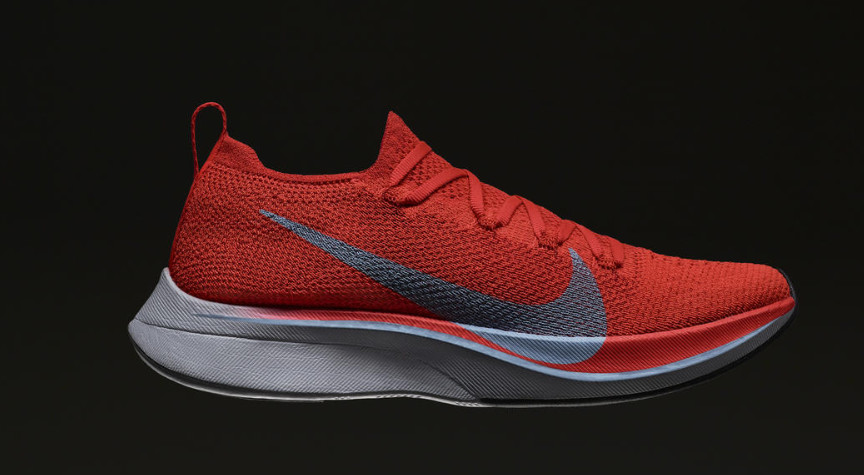
The study founds that, “The Zoom Vaporfly 4% or ZoomX Vaporfly Next% — ran 4 to 5 percent faster than a runner wearing an average shoe, and 2 to 3 percent faster than runners in the next-fastest popular shoe.” The name four per cent was born out of Nike’s finding that the shoe could make the wearer four per cent more efficient–efficiency translates to less effort at the same pace, which means a runner can go faster. So the claim that the shoe makes a runner faster as opposed to simply more efficient is new.
Another key finding was that men had a 73 per cent chance of running a personal best in the shoes, while women had a 74 per cent chance, “In a race between two marathoners of the same ability, a runner wearing these shoes would have a significant advantage over a competitor not wearing them.” The Times also reports, “In the final months of 2019, about 41 per cent of marathons under three hours were reported to have been run in these shoes (for races in which we have data).”
When someone first comes to running, they find that after the initial agony of getting your legs used to the motion, there’s quick improvement. You’ll run a 5K personal best and then a subsequent PB just weeks (or even days) later. Because you’re new to the sport, the time melts away in the first few races.
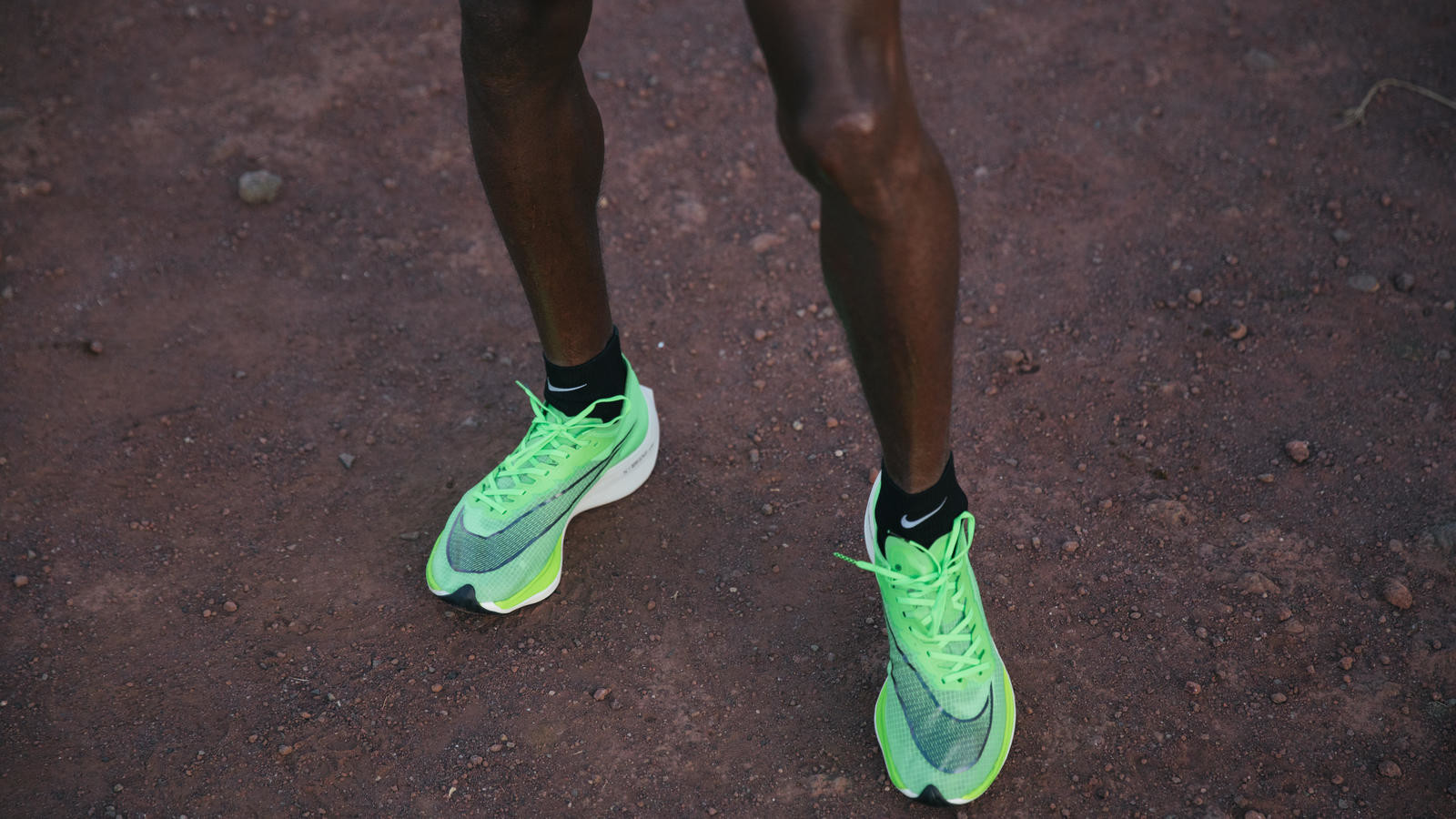
But as you progress and become better, it can take months and even years to run a personal best. And for the competitive runner, staying patient is the hardest part. But what if someone told that runner who’d been trying to PB for 14 months, 27 days and 13 hours, that if they spent $330 CAD they had a 73 per cent chance at finally improving? If they have the budget, that’s an appealing statistic.
Two weeks ago Molly Huddle, who has the sixth-fastest marathon time among American women in 2019 (she ran a personal best 2:26:33 at the London Marathon), replied to a tweet by sports journalist Cathal Dennehy about the AlphaFly (Nike’s next step in the carbon-plated game). The shoe was first seen on the feet of marathon world record-holder Eliud Kipchoge, who raced to a 1:59:40 finish in them at the INEOS 1:59 Challenge in Vienna last month. Huddle’s comment: “Kinda nervous as to how this would affect the Olympic Trials over here @usatf.”
It’s not just Huddle who has noticed the effect the shoe (or prototype versions) could have on the US Olympic Marathon Trials. Runners are qualifying for the event at unprecedented rates. With the qualifying window still open for another five weeks, entries are already nearing the thousands.
It’s important to note that the qualifying standard for the trials did get two minutes easier (2:43 in 2016 to 2:45 in 2020). But does two minutes warrant a potentially doubled field size or are technological advantages, like the Nike shoes, the reason for the jump? The New York Times’ finding would suggest the latter.
by Madeleine Kelly
Login to leave a comment
Fancy Running Shoes Do Seem to Make You Run Faster?
Login to leave a comment
Does NIKE'S Vaprofly really improve performance by 4%?
Created in conjunction with Breaking2, Nike’s attempt to enable the first sub-two-hour marathon, the Nike Zoom Vaporfly 4% was designed with the goal of helping the world’s fastest marathoners run their best.
The tooling features new Nike ZoomX foam that is ultra-lightweight, soft and capable of providing up to 85- percent energy return. Shalane Flanagan wore this shoe and won the NYC marathon, the first American woman in forty years.
Login to leave a comment


